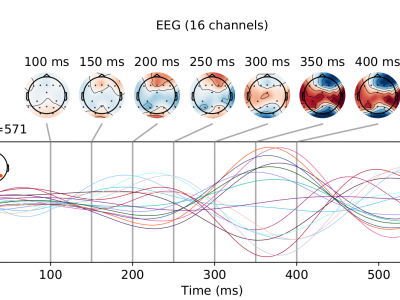brain-computer interfaces

Data and Reuslts from this work:
- Categories:
 88 Views
88 ViewsAbstract— Objective: Recently, pupil oscillation synchronized with a steady visual stimulus was employed for an input of an interface. The system is inspired by steady-state visual evoked potential (SSVEP) BCIs, but it eliminates the need for contact with the participant because it does not need electrodes to measure electroencephalography. However, the stimulation frequency is restricted to being below 2.5 Hz because of the mechanics of pupillary vibration and information transfer rate (ITR) is lower than SSVEP BCIs.
- Categories:
 233 Views
233 ViewsDataset description
This dataset contains EEG signals from 73 subjects (42 healthy; 31 disabled) using an ERP-based speller to control different brain-computer interface (BCI) applications. The demographics of the dataset can be found in info.txt. Additionally, you will find the results of the original study broken down by subject, the code to build the deep-learning models used in [1] (i.e., EEG-Inception, EEGNet, DeepConvNet, CNN-BLSTM) and a script to load the dataset.
Original article:
- Categories:
 2489 Views
2489 ViewsThe EEG data were acquired from 16 healthy young adults (age range 22 - 30 years) with no neurological, physical, or psychiatric illness history. All the participants were naive BCI users who had not participated in any related experiments before. Informed consent was received from all participants.
- Categories:
 4963 Views
4963 Views
This material is associated with the PhD Thesis of Javier Olias (which is supervised by Sergio Cruces) and the article:
“EEG Signal Processing in MI-BCI Applications with Improved Covariance Matrix Estimators” by J.Olias, R. Martin-Clemente, M.A. Sarmiento-Vega and S. Cruces,
which was accepted in 2019 by IEEE Transactions on Neural Systems and Rehabilitation Engineering.
- Categories:
 921 Views
921 Views


